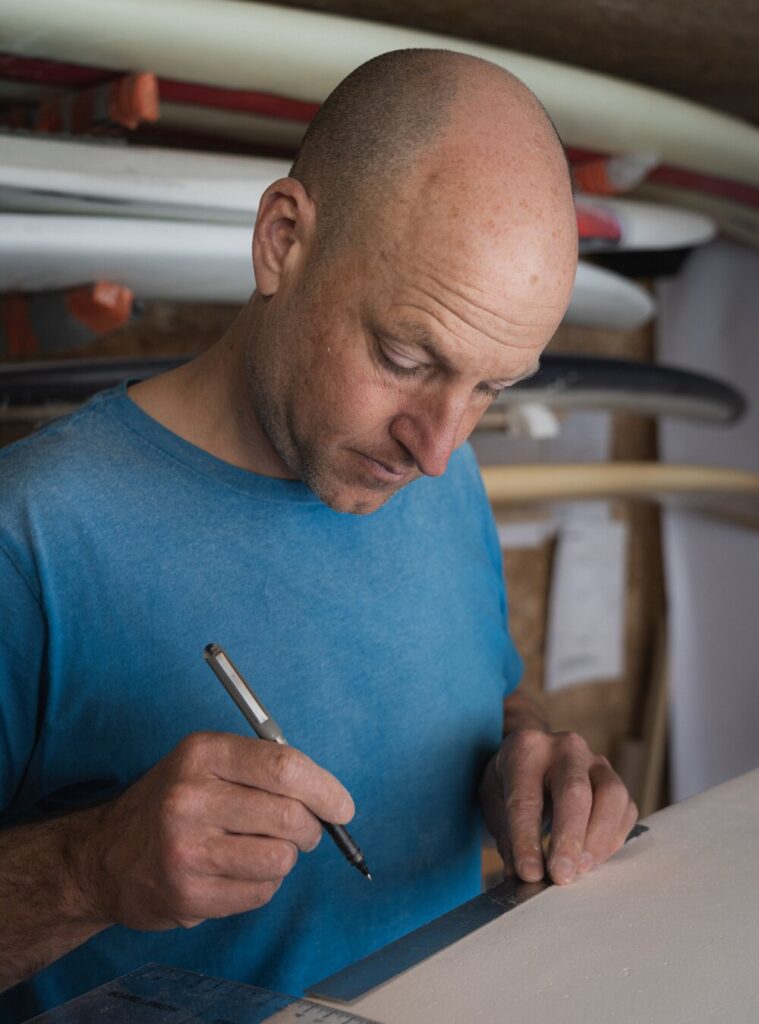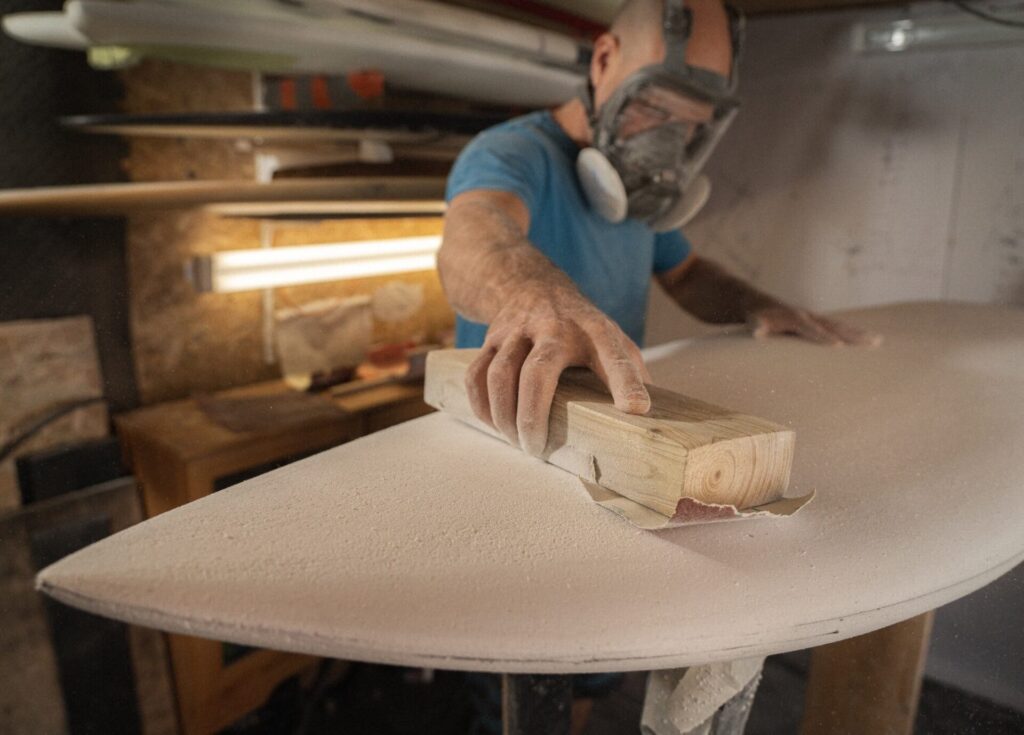Interview & Photography | Jim Tan
Brow furrowed in concentration, he stares down the edge. The key dimensions are written on the wall behind, each carefully chosen to enhance a specific characteristic, but that’s just the skeleton; the subtleties, the character, he keeps in his mind. A final check with the rule, then another pass with the sandpaper. With each stroke, tiny particles of polystyrene shower the air as the vision in his mind is slowly revealed, a collision of engineering precision and artistic creativity to produce an object that is both functional and beautiful, but above all, is fun to ride.
For most people, the middle of a global pandemic isn’t the optimal time to start a business, but Ben Slack isn’t most people. With time available in lockdown, Ben saw an opportunity, a chance to roll the dice, follow his passion and start his own company shaping bespoke surfboards.
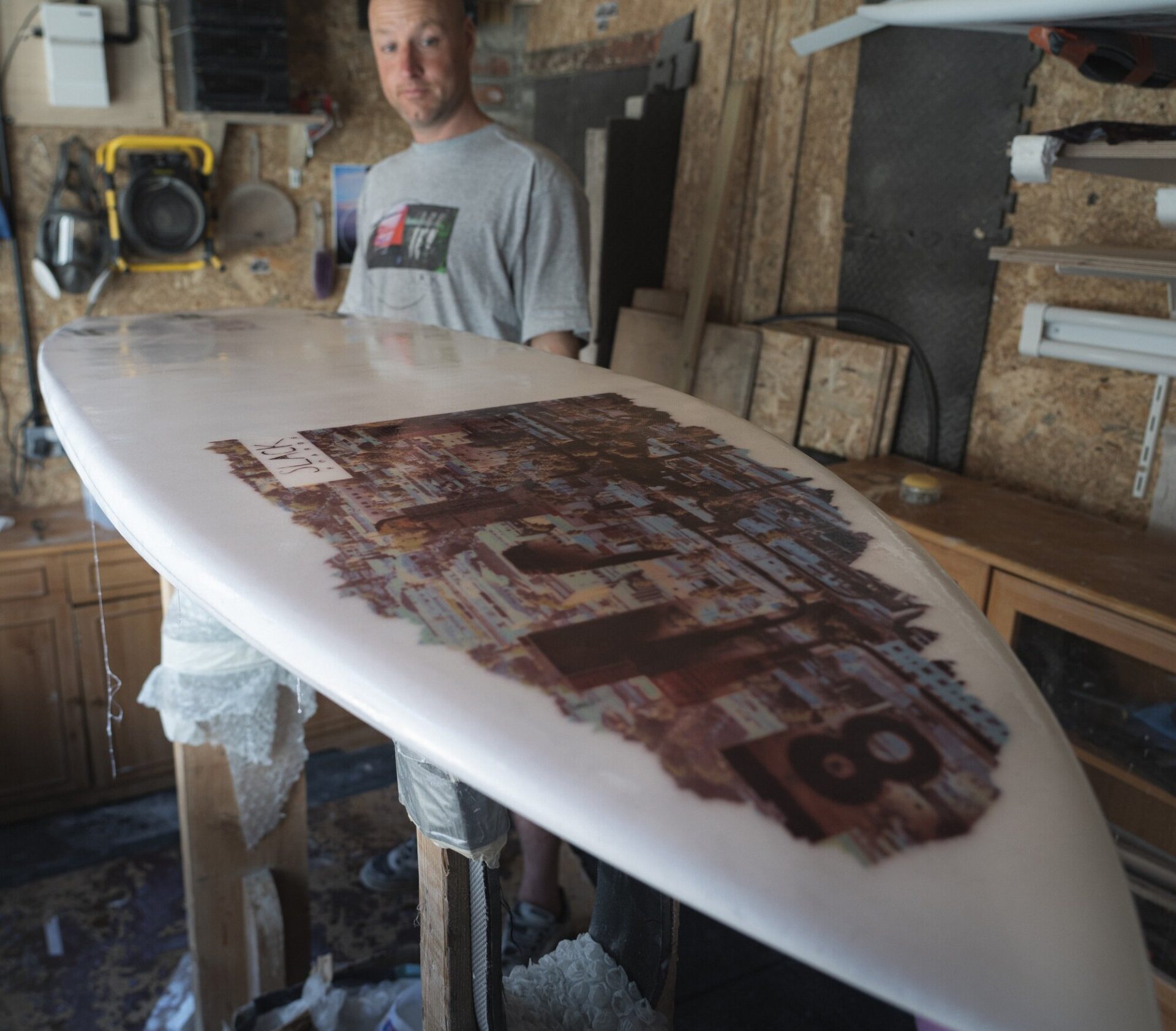
What led you to building boards and what is it you enjoy about it?
I was intimidated by it I didn’t understand it. I was curious. How do you make something so delicate? Every action is irreversible. Like, as soon as you’ve taken foam away you can’t put it back, it’s really nerve-wracking! I’d surfed lots of different shapes and liked aspects of each of them so I wanted to combine those things. I wanted to make a great board for me and get other people with similar body types to me to use them and see how they felt about them. From there the boards can be scaled up and down in size.
I really like having people borrow the demo boards, getting their feedback and building up a picture of what’s going to suit them.
Starting a business in lockdown during an economic downturn is a pretty brave decision. What made you take the leap and how’s the reality working out for you so far?
Yeah pretty flippin’ ridiculous! We’ve all changed now we’ve had the opportunity to see things differently. Even before, the world was changing faster than I could keep up with and that was exciting and dangerous. But now people see the importance of escaping into the outdoors to snatch those moments of tranquility. I don’t think you can plan for the future, just what’s around us today and today we can’t go near each other; it’s hard to break the 2m distancing rule while on a wave, so surfing seems a responsible pastime.
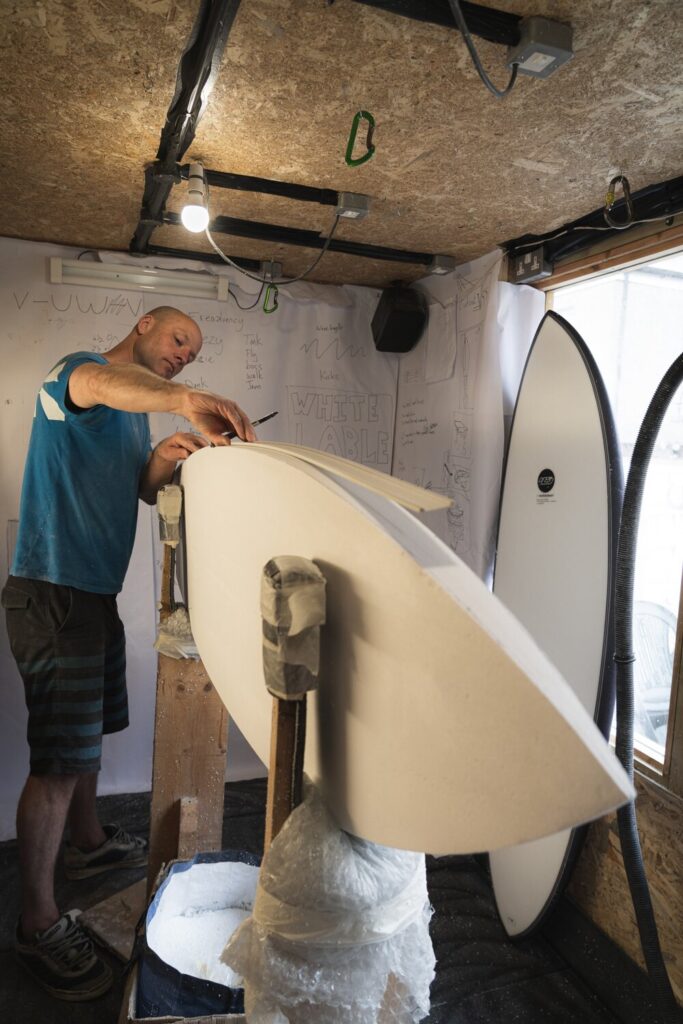
You’ll regret something you’ve done, not something you haven’t. Maybe it won’t work but you will learn from it. There’s nowt wrong with failing.
What does your process look like when you set about building a board?
I make a list of what it’s for, what it should do, then kick out what doesn’t fit in the list. Think how to combine that into one shape and blend that shape into a form as simple and as elegant as I can, remembering it needs to pass through water. Kick out more aspects if they don’t fit, accentuate the remaining elements.
What I mean by this is if I’m making a performance board, then maybe what makes a board good in choppy waves needs to be dropped to allow the board to be smoother at speed. There’s not one perfect shape so a board that tries to do everything may end up doing nothing well.
I’ll make a prototype, use it in a variety of waves and get others to use it too. Then I’ll make small adjustments if the prototype can be adapted – I’ve got one Frankenstein’s monster of a board I’m too embarrassed for people to see its had so many changes, but I’ve learned so much from it, about the effect of incremental changes to a shape – or start again with a new blank if the changes will be too big. A shape is never finished, when someone wants a board, it is then made with adjustments to their requirements, weight, height, paddle ability, surfing style, wishes they may have. And who knows, those aspects may influence a change in that model.
How do you blend the creative and technical aspects of your work?
These are two very different sides, but both a pleasure. I can’t shape when I’m tired, so early mornings and daytimes are good for that. And then I don’t find creativity easy in the daytime, so that side is best left to late evenings preferably when it’s dark.
I’m not motivated to do both equally but that oscillates between the two. I can go for weeks and not be interested in the imagery and if I do have to create something I feel stale and wretched. I’ve learned to cope with that by producing more when I’m motivated, I’ll do my work and then keep playing with no goal in mind and see where I end up and so far that’s given me a well of ideas to draw from. I’m never not motivated to make or repair a board, it’s like it comes from a different part of my brain. Unless I’m physically tired from being in the water, then I’ll need more coffee to reluctantly drag myself off to work.
How did you get into surfing?
I had a climbing finger injury, and I needed another hobby. I mountain biked for a short while, but I was scared of tree stumps and decided I’d prefer to fall into water. I then made some lasting friendships early on who guided me and kept me motivated through the long, gruelling, thankless learning process. A journey I’m still on, aren’t we all?
How would you describe the surfing scene in North Wales?
Niche – you gotta love rubber. Winters are cold and you still need a wetsuit in summer. People shouldn’t come for just a surfing holiday, they’d be disappointed, but if they pack a board/bodyboard, a snorkel, a bike, climbing kit, then they’ll have a great time. But I think you need to live here to appreciate it fully, and nobody would choose here just as a surfing location.
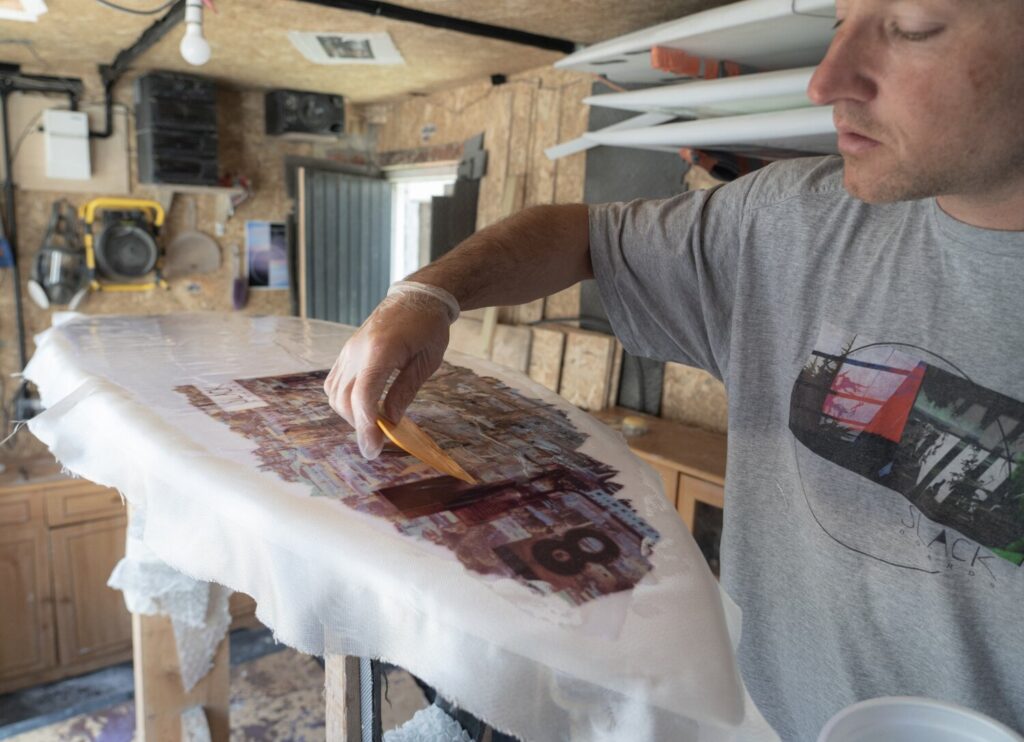
What kind of boards work well for the conditions in North Wales?
I bought an amazing board a few years ago and got on really well with it while travelling, but it didn’t work well here at all. I was missing waves on it and sinking as the waves had less power. I find for boards here there needs to be a touch more float to keep the wave count up, and when riding the board needs to create more drive to make up for less power in the wave which will make for longer rides. The solution wasn’t to get a longer board, I still wanted something small and manoeuvrable, so the boards I’ve made hide some extra volume with adjusted planing surfaces. That makes them much better boards to paddle which means catching more waves.
What advice would you give to anyone else out there thinking of taking the plunge and pursuing their passion?
I’m going to sound clichéd, but that’s why they’re cliche’s I suppose, because they ring true for so many people. You don’t know if you don’t try. You’ll regret something you’ve done, not something you haven’t. Maybe it won’t work but you will learn from it. There’s nowt wrong with failing.
Like I was told by Guto at Y Cwt Trwsio – just start, Ben!
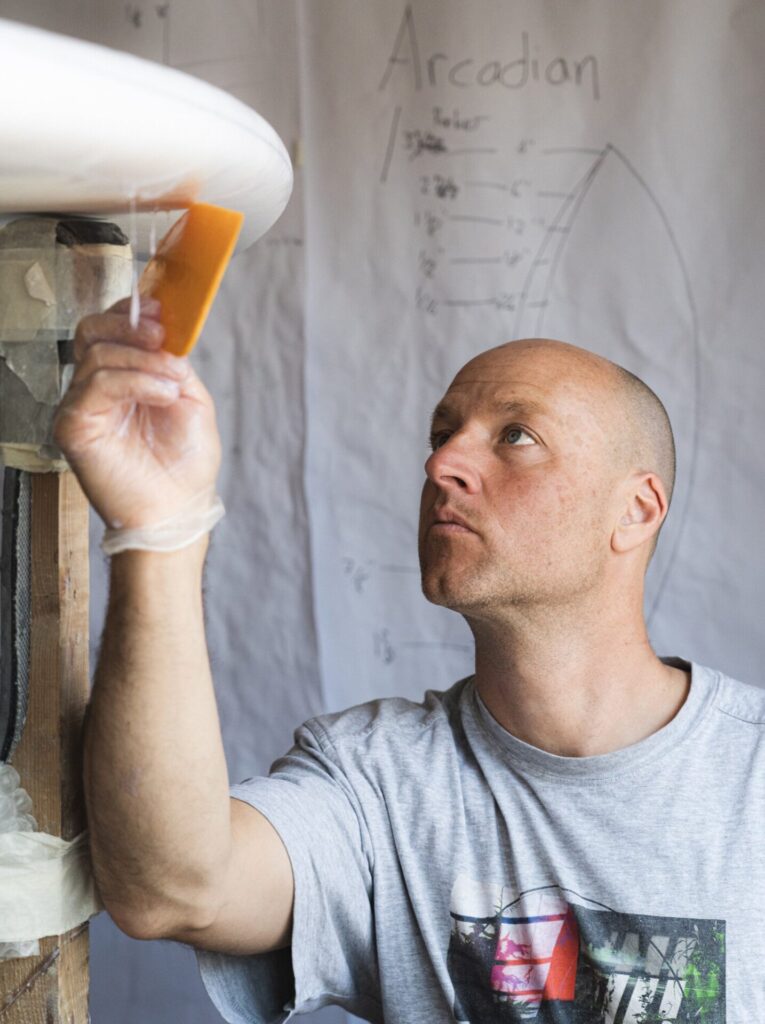
Don’t miss a single adventure
Sign up to our free newsletter and get a weekly BASE hit to your inbox
You might also like
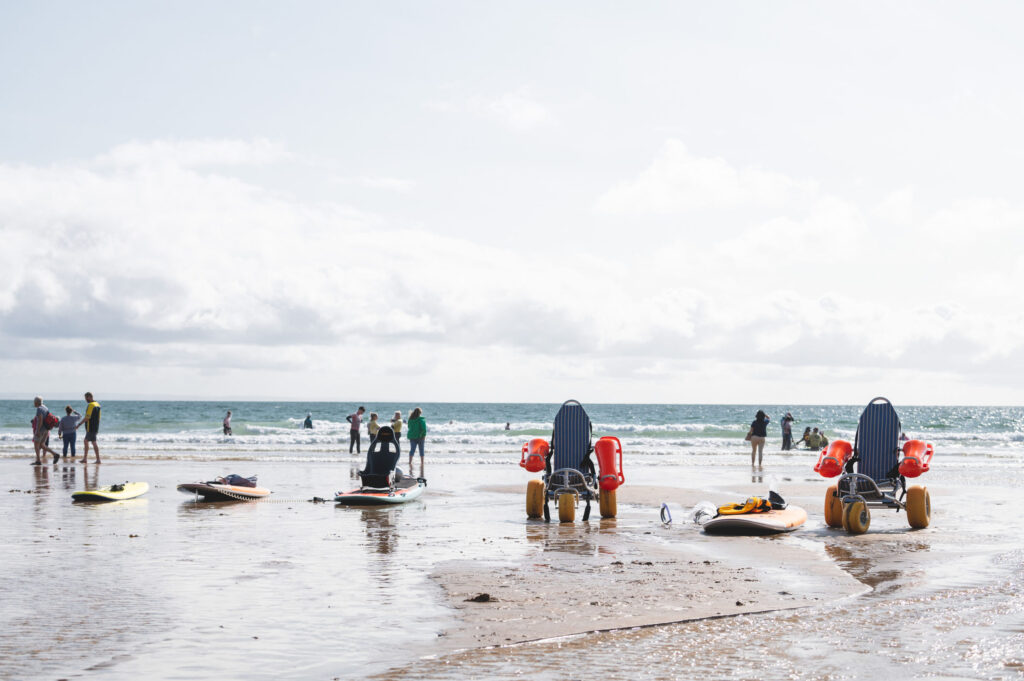
Story • Hannah Dines • Mar 01, 2023
Let My Disabled People Go Surfing
How do we ensure our coastlines are accessible to all? Para athlete and adaptive surfer, Hannah Dines finds out
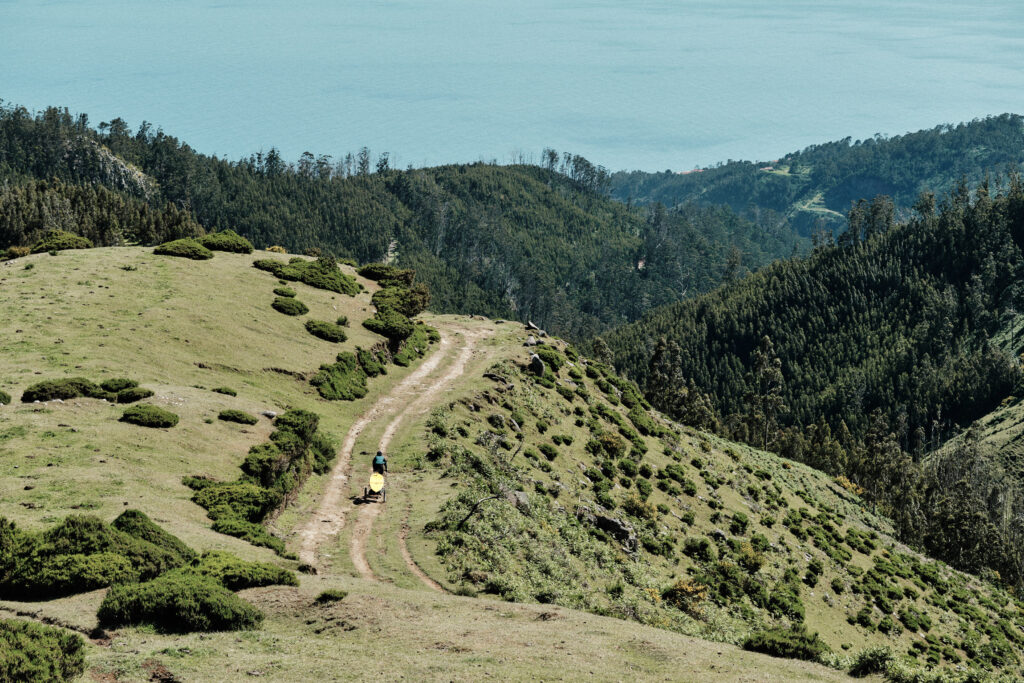
Story • Sami Sauri • Jul 13, 2022
32 Degrees North: Bikes and Waves on Maderia
Sami Sauri explores the best of this Atlantic island by bike and surfboard
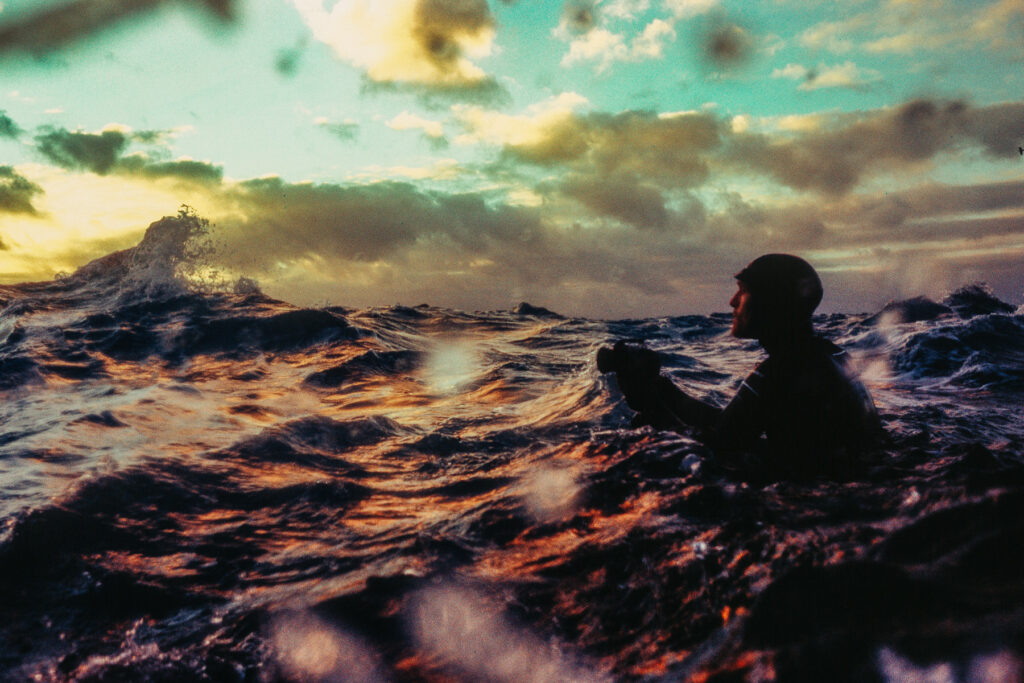
Video • BASE editorial team • Mar 11, 2022
Recollections in Atlantic Reverie
A lifetime of human hearts bewitched by the sea
